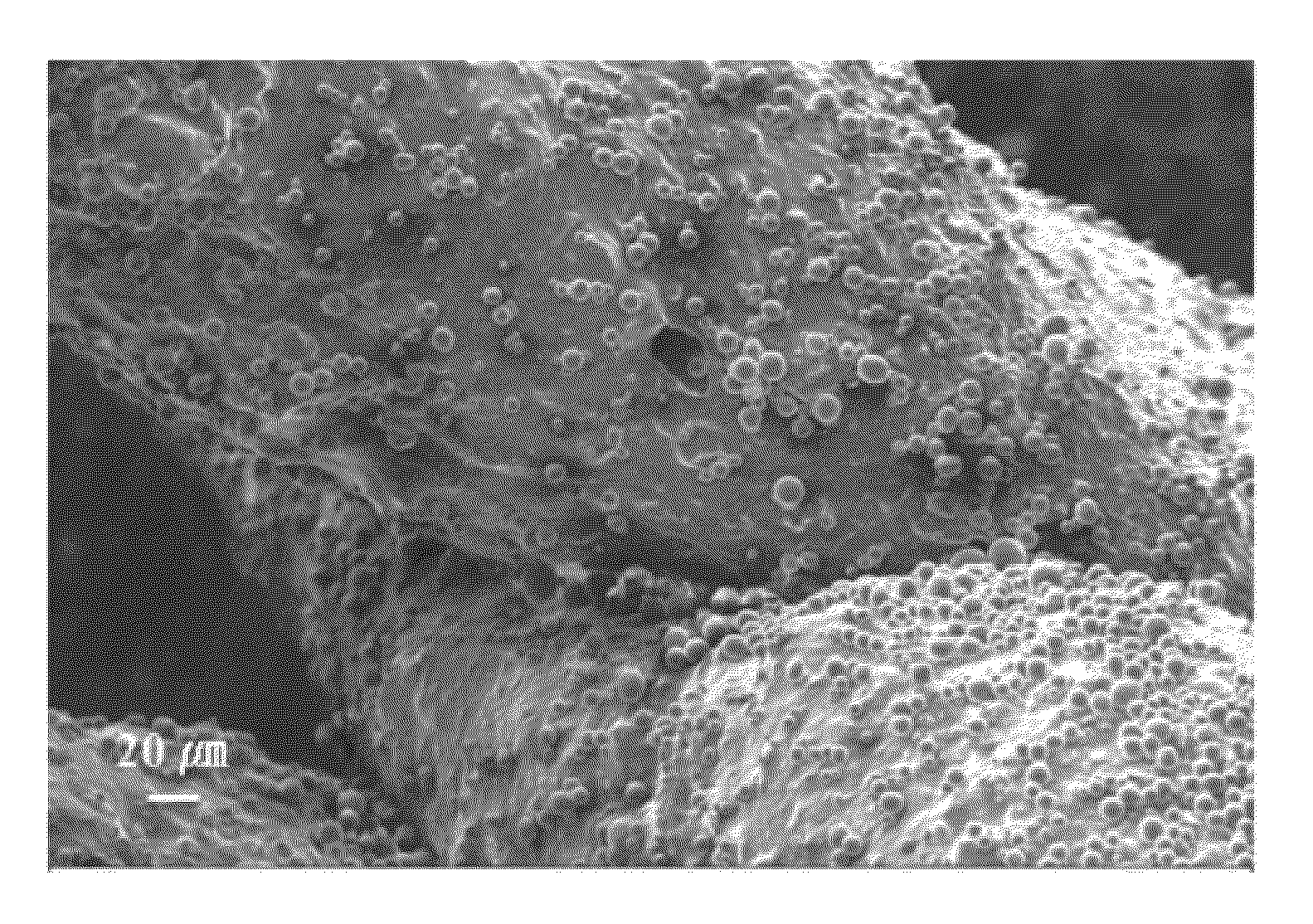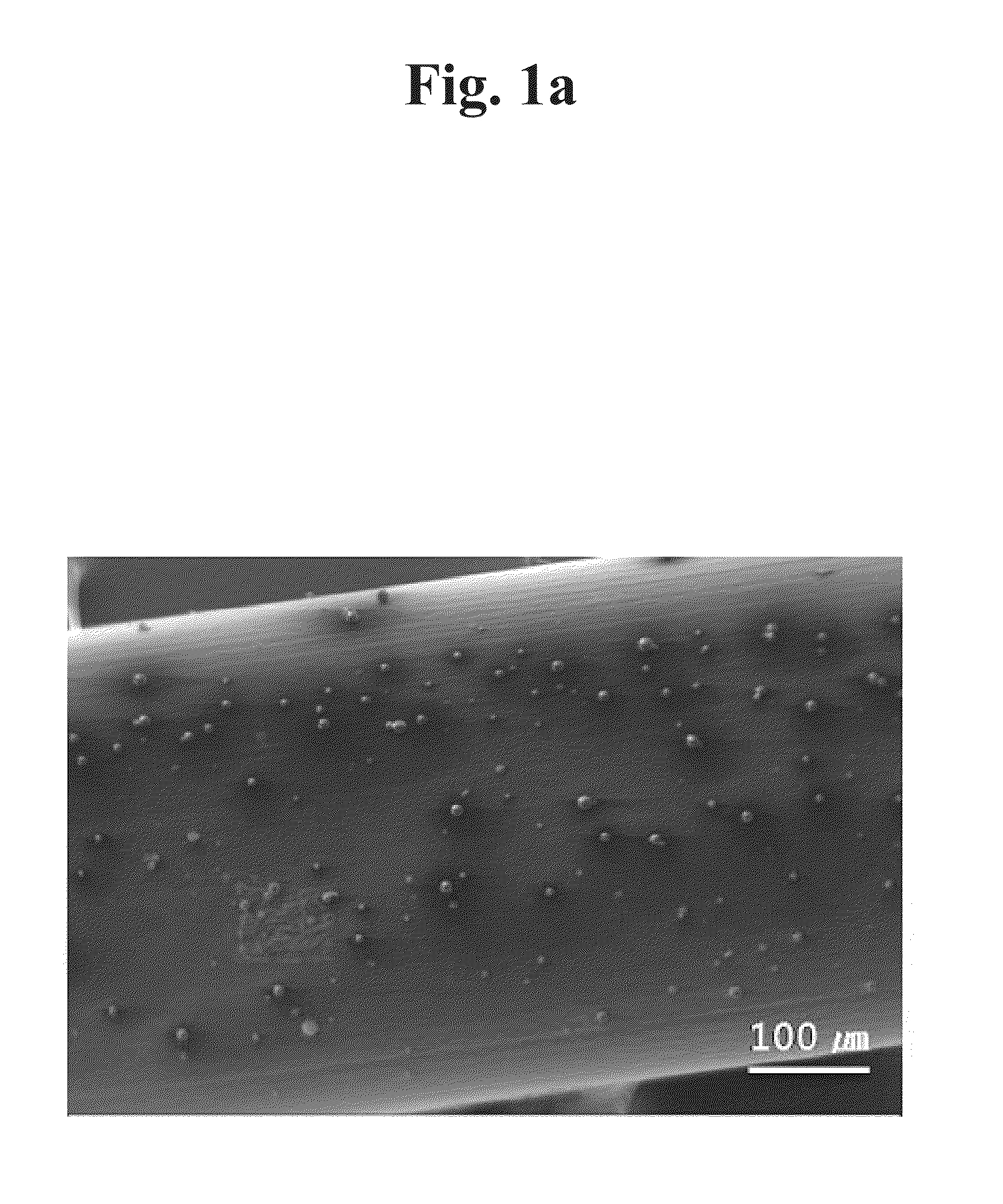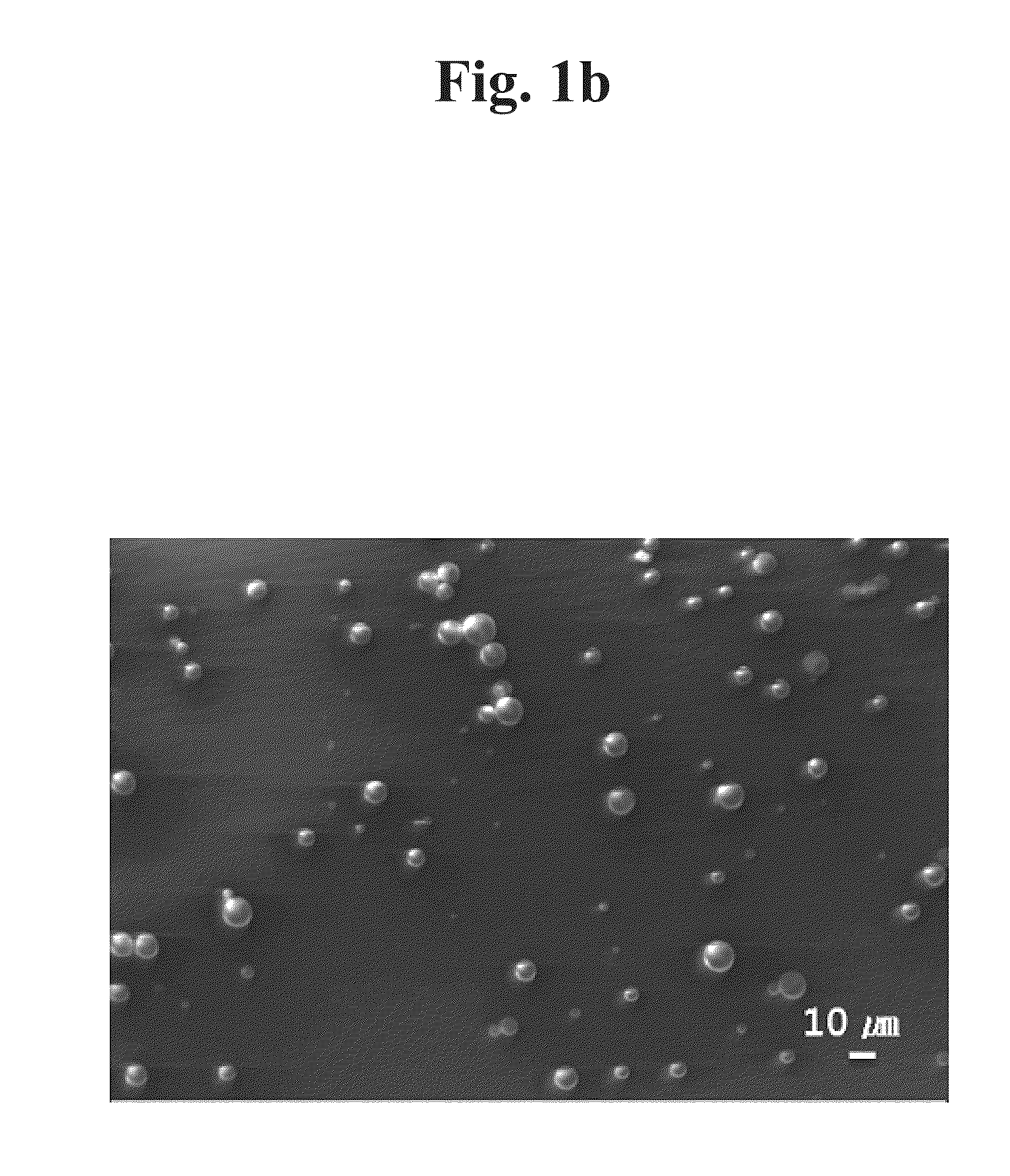Method for preparing polymeric biomaterials having immobilized drug delivery system comprising bioactive molecules loaded particle carrier
a technology of bioactive molecules and polymeric materials, which is applied in the direction of packaging foodstuffs, metabolism disorders, impression caps, etc., can solve the problems of cytotoxicity of polymer having functional groups, difficult control of the release rate and amount of bioactive molecules of thus prepared polymeric materials, and the probability of remaining chemicals, etc., to achieve the effect of improving the low histocompatibility and wound healing effect of conventional polymeric materials, easy and rapid application, and maximizing the therapeutic
- Summary
- Abstract
- Description
- Claims
- Application Information
AI Technical Summary
Benefits of technology
Problems solved by technology
Method used
Image
Examples
exemplary embodiment 1
[0044]To begin with, as a polymeric material for the test, a commercially available polydioxanone (PDO) monofilament suture was prepared. Particles using a biodegradable polymer were prepared as follows. 1 g of PLGA (75:25) was completely dissolved in 9 ml of dichloromethane, and 40 mg of dexamethasone as a bioactive molecule was dissolved in 1 ml of ethanol. The resulting solution was put into the PLGA solution and stirred for 20 minutes, thereby preparing a PLGA polymer solution containing dexamethasone. Subsequently, the thus prepared dexamethasone / PLGA polymer solution was mixed with 100 ml of a 0.2% polyvinyl alcohol (PVA) aqueous solution and was stirred with a homogenizer at 10,000 rpm for 3 minutes. Then, the resulting solution was poured into 300 ml of a 0.5% PVA aqueous solution and was stirred at 600 rpm for 5 hours. The resulting product was washed with distilled water three times and was freeze-dried, thereby preparing dexamethasone / PLGA particles.
[0045]Hydrophilic surf...
exemplary embodiment 2
[0048]As a polymeric material for the test, a commercially available silk suture (#3, braided) was prepared. PLGA nanoparticles were prepared as follows. 200 mg of PLGA (75:25) was completely dissolved in 10 ml of dichloromethane, and 40 mg of dexamethasone as a bioactive molecule was dissolved in 1 ml of ethanol. The resulting solution was put into the PLGA solution and stirred for 20 minutes, thereby preparing a dexamethasone-loaded PLGA polymer solution. Subsequently, the thus prepared dexamethasone / PLGA polymer solution was mixed with 25 ml of a 0.5% PVA aqueous solution and was stirred with a homogenizer at 10,000 rpm and for 3 minutes. Then, the resulting solution was poured into 65 ml of a 0.5 PVA aqueous solution and stirred at 700 rpm for 5 hours. In the same manner as Exemplary Embodiment 1, the dexamethasone-loaded PLGA nanoparticles were immobilized on the surface of the silk suture. Then, heat treatment was performed at 150° C. for 10 seconds to improve binding strength...
exemplary embodiment 3
[0050]As a polymeric material for the test, a collagen film for GBR was prepared. To prepare polyelectrolyte nanoparticles, 0.1% vancomycin, an antibiotic, as a positively-charged material and a 0.1% dexamethasone disodium phosphate aqueous solution effective in inhibiting inflammation and tissue regeneration as a negatively-charged material were prepared. The dexamethasone aqueous solution was added dropwise to the vancomycin aqueous solution and was shaken for 2 hours, thereby preparing vancomycin / dexamethasone nanoparticles by ion complex. To remove unreacted vancomycin and dexamethasone, the vancomycin / dexamethasone nanoparticles were filtered through a permeable membrane and were centrifuged to harvest. Then, a predetermined amount of the nanoparticles was dispersed in deionized water, a collagen film was added thereto, and the resulting solution was slowly shaken for 5 hours to give a collagen film for GBR with a drug delivery system on which vancomycin / dexamethasone nanoparti...
PUM
| Property | Measurement | Unit |
|---|---|---|
| Temperature | aaaaa | aaaaa |
| Length | aaaaa | aaaaa |
| Fraction | aaaaa | aaaaa |
Abstract
Description
Claims
Application Information
 Login to View More
Login to View More - R&D
- Intellectual Property
- Life Sciences
- Materials
- Tech Scout
- Unparalleled Data Quality
- Higher Quality Content
- 60% Fewer Hallucinations
Browse by: Latest US Patents, China's latest patents, Technical Efficacy Thesaurus, Application Domain, Technology Topic, Popular Technical Reports.
© 2025 PatSnap. All rights reserved.Legal|Privacy policy|Modern Slavery Act Transparency Statement|Sitemap|About US| Contact US: help@patsnap.com



